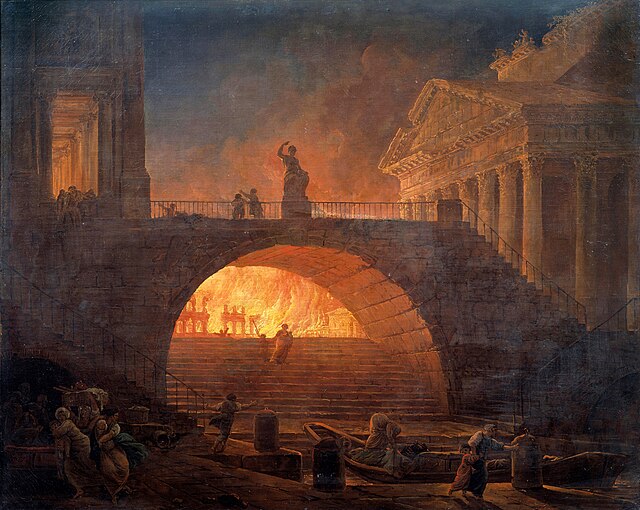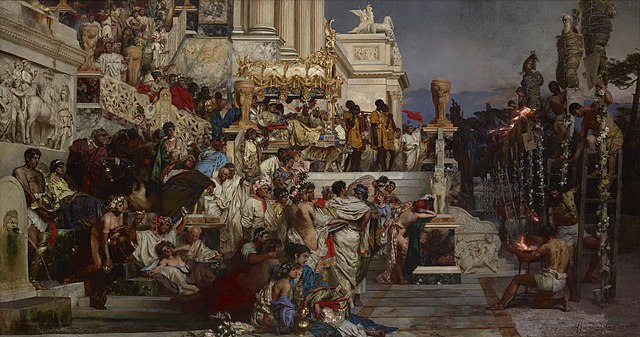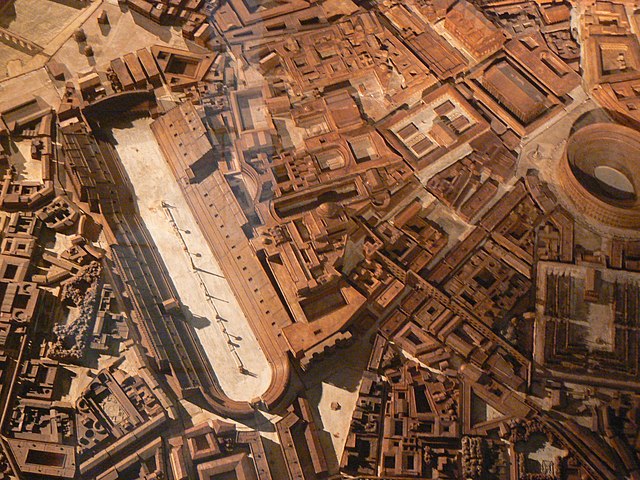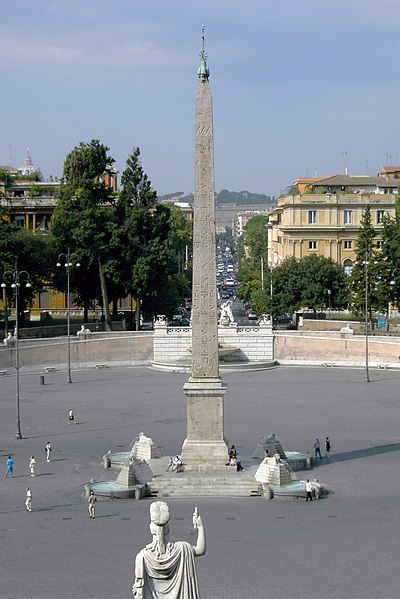The Great Fire of Rome began on the 18th of July 64 AD. The fire began in the merchant shops around Rome's chariot stadium, Circus Maximus. After six days, the fire was brought under control, but before the damage could be assessed, the fire reignited and burned for another three days. In the aftermath of the fire, 71% of Rome had been destroyed.
Fire in Rome by Hubert Robert (1785)
Nero's Torches by Henryk Siemiradzki. According to Tacitus, Nero targeted Christians as those responsible for the fire.
The Circus Maximus is an ancient Roman chariot-racing stadium and mass entertainment venue in Rome, Italy. In the valley between the Aventine and Palatine hills, it was the first and largest stadium in ancient Rome and its later Empire. It measured 621 m (2,037 ft) in length and 118 m (387 ft) in width and could accommodate over 150,000 spectators. In its fully developed form, it became the model for circuses throughout the Roman Empire. The site is now a public park.
View of the Circus site from the south-east. The tower in the foreground is part of a medieval fortification.
Model of Rome in the 4th century AD, by Paul Bigot. The Circus lies between the Aventine (left) and Palatine (right); the oval structure to the far right is the Colosseum.
View of the Circus site from the south-east in 2019
The Obelisco Flaminio, now in the Piazza del Popolo, was once part of the dividing barrier (spina) at the Circus Maximus






